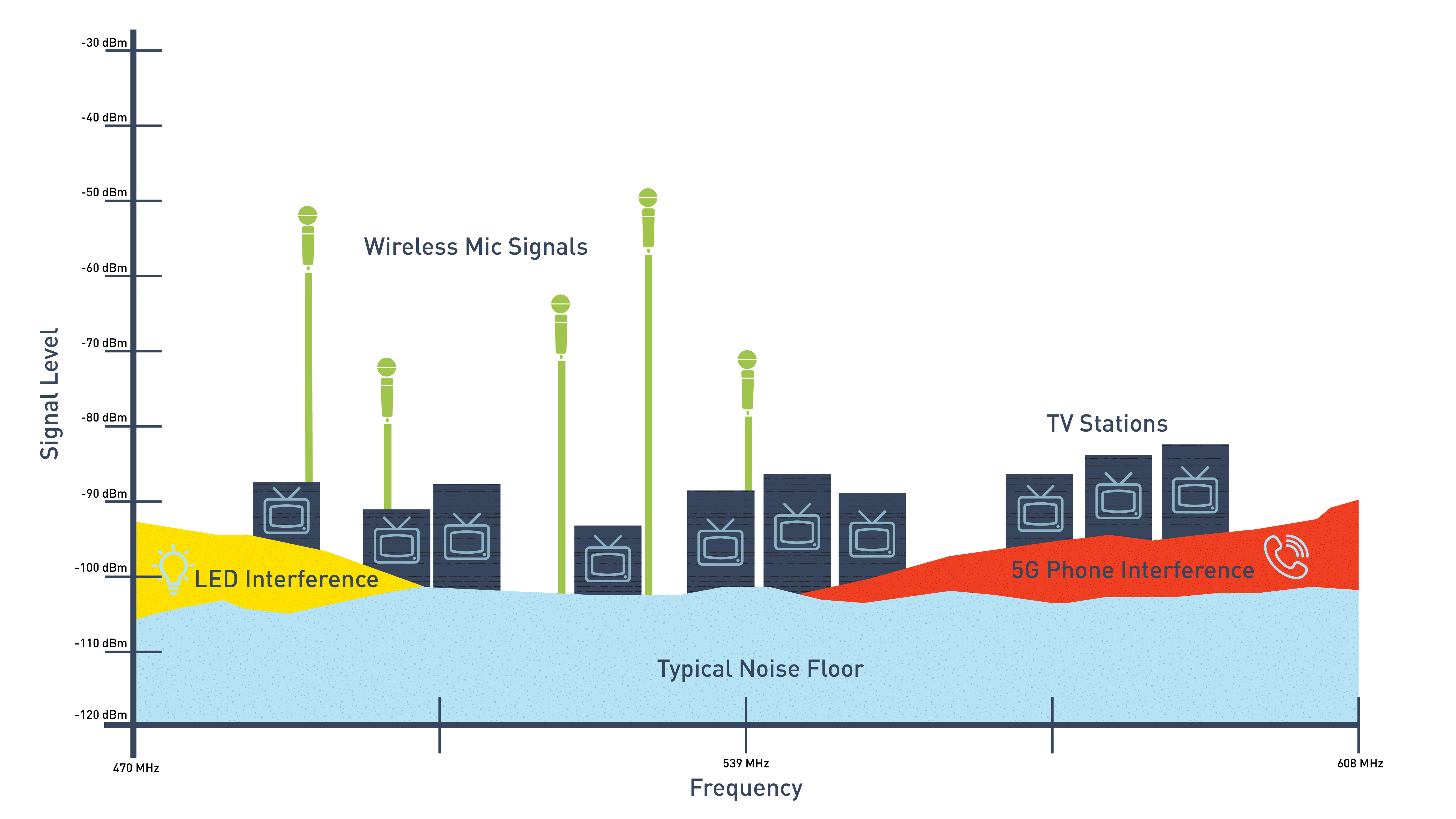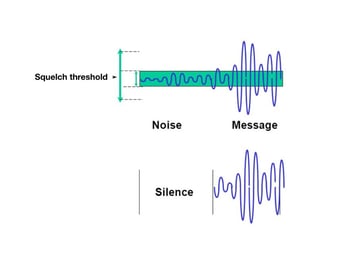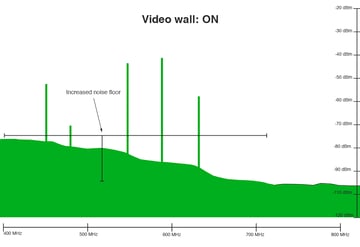- Products
- All Products
- RF PA Extension Kit
- Wireless Microphone Upgrade Packs
- In-Ear Monitor Upgrade Packs
- Wireless Microphone Antennas
- Wireless In-Ear Monitor Antennas
- Antenna Distribution for Microphones
- Antenna Combiners for In-Ear Monitors
- Multi-Zone Antenna Combiners
- Spectrum Tools
- Accessories, Cables and Parts
- Solutions by Venue
- Resources & Training
- Performance Tools
- About Us

More and more people are enjoying the benefits of wireless mics these days, including smoother setup, networked software control, new digital radios that can operate in tough environments, and of course no cables to trip on!
The good news is that wireless mics perform much better than they did even 5 or so years ago. But in the past 10 years there have been numerous changes to how wireless mics can operate here in the USA that are now almost fully in place. That leaves us with much less available bandwidth in which to operate and at the same time newer generation wireless mic are more robust then models past. Both are changes mandated by the FCC.
The good news is that we expect the current generation of wireless mics to be able to operate properly and reliably under most circumstances. The bad news is that we almost always need to operate them using all the best practices and tools at our disposal. And most often that means we need to use accessories that were not needed in days past.
Maybe you have a wireless system that has operated flawlessly for the past 10 years but now you are starting to have tiny reliability problems. Today’s airwaves are are not the same as those of past years. Wireless mics years ago could operate over more than 500 MHz of relatively empty space! Today there is only a little more than 100MHz of available space and competition for that space has greatly increased.

Wireless microphone operating bandwidth 2009 to today
Most everyone is aware that the FCC has shut down almost all frequencies above 600 MHz, and in doing so moved over 1000 over-the-air television stations and brought them down into the 500 MHz range. In many metro areas you now have only 6% of the available open space in which to tune your mics to.
And if that wasn’t enough we now have interference from 5G cell phones and from LED lighting and video monitors spilling over into the precious little bandwidth we have left. Also many are adding wireless in-ear monitors into their productions thereby increasing the total numbers of radios looking for clear spots in the band to operate in.

This is why accessories have become essential. In days past the little whip antennas that came with your mic receiver probably got you up and running. But now they are most often not enough to ensure reliable operation.
Best practices these days include using specialty directional antennas, that reduce noise pickup and eliminate antenna polarization losses. Antenna distros eliminate “antenna farms” by reducing the number of antennas used (almost always only 2 antennas is the best choice) thereby reducing your RF noise floor and improving RF stability. Bandpass interference filters can greatly reduce the harmful effects of 5G cell phones and video monitor interference. Unfortunately adding these accessories, that you may have never had to purchase before, are essential to reliable and stable performance in today’s wireless environments.

Interference filters from RF Venue are one of the simplest ways of improving the performance of a wireless mic system.
At RF Venue we saw these new requirements over 10 years ago and started engineering new affordable devices that could handle the requirements of operating in the new RF spaces. Accessories are Essentials!
Tag(s):
Don Boomer
Don Boomer is Senior applications engineer at RF Venue. He has worked in R&D in the past for Peavey, Sabine and Line 6 and his rock band from his high school days has a song in the Rock n Roll Hall of Fame
More from the blog
Subscribe to email updates
Stay up-to-date on what's happening at this blog and get additional content about the benefits of subscribing.




